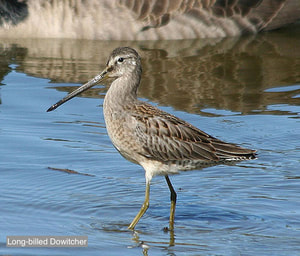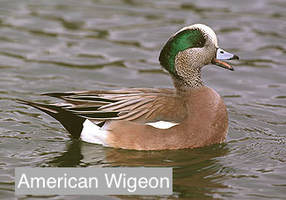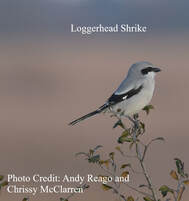
Migratory Birds
Featured Article: September 2016
By Dr. Nicki Frey
Heads Up Bird Nerds!
The fall bird migration season has begun! It is the time of year when you can see birds flying south on their way to warmer climates. Some bird species that are common summer residents of Utah are leaving, and you may spot some northern Utah species as they fly by, stopping in bushes and trees to feed along the way. Other bird species spend their summers in the arctic and northern states of the U.S. but winter here in Utah. There have been at least 330 bird species observed in Beaver, Iron and Washington Counties during the fall migration in the last decade. My personal favorite is when I encounter flocks of Cedar Waxwings, with their quiet whirring chirps and their beautiful flashes of yellow.
For southern Utah, there are some key spots to go birding in the Fall. Brian Head Peak is popular place for folks to visit that want to spot raptors, such as eagles, ferruginous hawks, ospreys, northern goshawks, and peregrine falcons, as they travel south. Other species such as pine grosbeaks and red crossbills will also make their appearance along the trails near Brian Head Peak.
Coal Pits Wash, near Zion Canyon National Park, is another –warmer- location to begin to find bird species that will stay the winter in Utah. Northern Shrikes and American Pipits are two such birds. Northern shrikes are carnivorous birds that sometimes impale their prey on cactus spines or barbed wire fences! Other common birds are greater roadrunners, Gambel’s quail, and 2 species of orioles.
Featured Article: September 2016
By Dr. Nicki Frey
Heads Up Bird Nerds!
The fall bird migration season has begun! It is the time of year when you can see birds flying south on their way to warmer climates. Some bird species that are common summer residents of Utah are leaving, and you may spot some northern Utah species as they fly by, stopping in bushes and trees to feed along the way. Other bird species spend their summers in the arctic and northern states of the U.S. but winter here in Utah. There have been at least 330 bird species observed in Beaver, Iron and Washington Counties during the fall migration in the last decade. My personal favorite is when I encounter flocks of Cedar Waxwings, with their quiet whirring chirps and their beautiful flashes of yellow.
For southern Utah, there are some key spots to go birding in the Fall. Brian Head Peak is popular place for folks to visit that want to spot raptors, such as eagles, ferruginous hawks, ospreys, northern goshawks, and peregrine falcons, as they travel south. Other species such as pine grosbeaks and red crossbills will also make their appearance along the trails near Brian Head Peak.
Coal Pits Wash, near Zion Canyon National Park, is another –warmer- location to begin to find bird species that will stay the winter in Utah. Northern Shrikes and American Pipits are two such birds. Northern shrikes are carnivorous birds that sometimes impale their prey on cactus spines or barbed wire fences! Other common birds are greater roadrunners, Gambel’s quail, and 2 species of orioles.
Duck Creek is a great place to go view waterfowl that are migrating through. American wigeons, canvasback, lesser scaup, common goldeneye, bufflehead, and phalaropes are some of the many waterfowl you can expect to see. Additionally, rough-legged hawks and green-winged teal spend their winters here.
Another great place to view waterfowl and shorebirds, is Panguitch Lake. Here, you can drive around the lake, viewing eared grebes, bald eagles, American wigeons, as well as some shorebirds with terrific names: Greater and Lesser yellowlegs, long-billed dowitchers, and red-neck phalaropes.
Once you’ve conquered these local sites, you’ll want to head north to the Great Salt Lake, one of the most important stopovers for fall migration in the country. The Wasatch Audubon Society has created a series of trails that feature 49 destinations. Be sure to stop and see the nearly ½ million Wilson’s phalaropes and eared grebes that stop at the Great Salt Lake during their fall migration.
New to birding, but want to try it? There are some great apps for your phone that can help you identify birds. Cornell Lab of Ornithology (ornithology = the study of birds) has created a terrific free app called “Merlin” that provides location information, photos and sounds through a series of 5 button choices. EcoLek has created another bird identification guide called “Birdeez”. There are many more, and you may even find apps that are regional. Once fall birding gets you addicted to bird watching, turning you into a “Bird Nerd”, you may want to visit Sand Hollow State Park and Tonaquint Nature Center, 2 southern Utah birding hotspots. Additionally, you can participate in the St. George Winter Bird Festival held January 26-28, 2017.
Another great place to view waterfowl and shorebirds, is Panguitch Lake. Here, you can drive around the lake, viewing eared grebes, bald eagles, American wigeons, as well as some shorebirds with terrific names: Greater and Lesser yellowlegs, long-billed dowitchers, and red-neck phalaropes.
Once you’ve conquered these local sites, you’ll want to head north to the Great Salt Lake, one of the most important stopovers for fall migration in the country. The Wasatch Audubon Society has created a series of trails that feature 49 destinations. Be sure to stop and see the nearly ½ million Wilson’s phalaropes and eared grebes that stop at the Great Salt Lake during their fall migration.
New to birding, but want to try it? There are some great apps for your phone that can help you identify birds. Cornell Lab of Ornithology (ornithology = the study of birds) has created a terrific free app called “Merlin” that provides location information, photos and sounds through a series of 5 button choices. EcoLek has created another bird identification guide called “Birdeez”. There are many more, and you may even find apps that are regional. Once fall birding gets you addicted to bird watching, turning you into a “Bird Nerd”, you may want to visit Sand Hollow State Park and Tonaquint Nature Center, 2 southern Utah birding hotspots. Additionally, you can participate in the St. George Winter Bird Festival held January 26-28, 2017.



